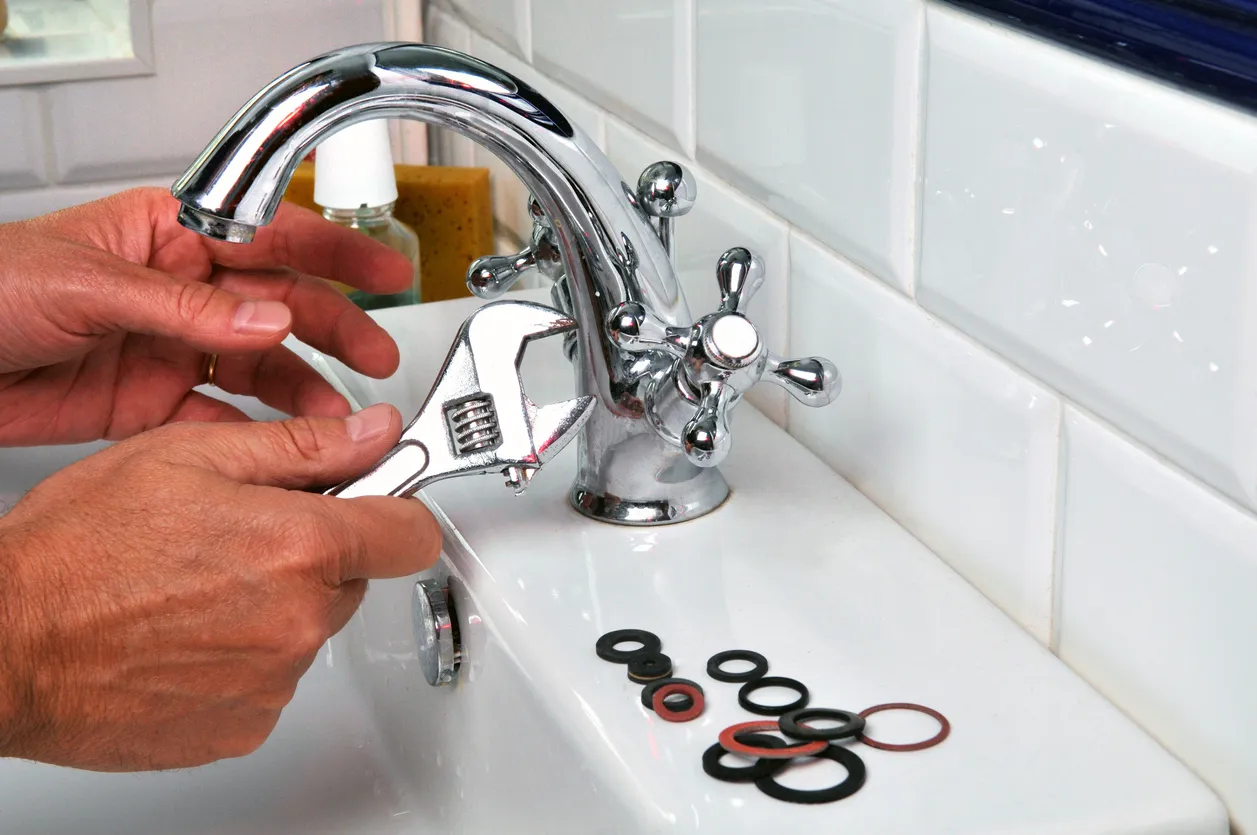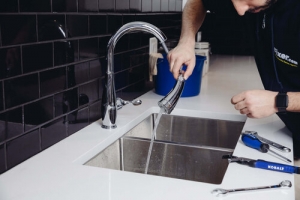Understanding the Importance of Repairing a Leaking Faucet
Understanding the Importance of Repairing a Leaking Faucet
Blog Article
We have stumbled upon this great article relating to How to Fix a Dripping or Leaky Faucet directly below on the web and think it made perfect sense to relate it with you on my blog.

Trickling taps may look like a minor trouble, however their effect goes beyond simply the aggravation of the noise. From drainage to sustaining unnecessary economic expenses and health threats, neglecting a dripping tap can result in numerous repercussions. In this write-up, we'll look into why it's crucial to address this common house issue immediately and effectively.
Waste of Water
Ecological Effect
Dripping taps contribute considerably to water waste. According to the Environmental Protection Agency (EPA), a single tap dripping at one drip per secondly can squander more than 3,000 gallons of water each year. This not only pressures water resources yet likewise affects ecological communities and wildlife dependent on them.
Step-by-Step Guide to Dealing With a Dripping Tap
Tools Required
Prior to attempting to fix a trickling faucet, collect the necessary tools, including a flexible wrench, screwdrivers, replacement components (such as washers or cartridges), and plumber's tape.
Common Faucet Issues and Their Solutions
Identify the type of faucet and the certain problem causing the drip. Common problems consist of damaged washers, rusty shutoff seats, or malfunctioning O-rings. Refer to supplier guidelines or online tutorials for detailed assistance on repairs.
Financial Expenses
Increased Water Expenses
Past the environmental effect, trickling faucets can pump up water costs substantially. The collected wastefulness over time equates right into higher utility expenditures, which can have been avoided with timely repair work.
Prospective Residential Or Commercial Property Damage
Additionally, extended leaking can cause harm to fixtures and surfaces bordering the faucet. Water build-up can trigger staining, corrosion, and even architectural concerns if left ignored, leading to additional repair prices.
Health and wellness Issues
Mold and Mildew Development
The continuous presence of dampness from a trickling faucet develops a suitable environment for mold and mold development. These fungis not just endanger indoor air high quality however likewise posture health and wellness dangers, specifically for individuals with respiratory system problems or allergic reactions.
Waterborne Illness
Stationary water in dripping faucets can end up being a breeding ground for germs and other pathogens, enhancing the danger of waterborne diseases. Contaminants such as Legionella germs prosper in stationary water, potentially causing significant illnesses when ingested or inhaled.
Do it yourself vs. Specialist Repair service
Benefits and drawbacks of DIY Fixing
While some may attempt to deal with a trickling faucet themselves, do it yourself fixings feature their very own collection of obstacles. Without appropriate knowledge and tools, do it yourself attempts can intensify the issue or bring about incomplete repairs, lengthening the issue.
Advantages of Employing a Professional Plumber
Working with a professional plumber makes certain that the underlying reason for the trickling tap is dealt with properly. Plumbing technicians possess the know-how and equipment to identify and fix tap problems efficiently, saving time and lessening the risk of more damages.
Environmental Responsibility
Specific Payment to Conservation
Taking responsibility for fixing leaking faucets straightens with wider efforts toward water preservation and ecological sustainability. Every person's actions collectively make a substantial impact on preserving priceless resources.
Lasting Living Practices
By prioritizing prompt repair services and adopting water-saving behaviors, individuals contribute to sustainable living techniques that benefit both existing and future generations.
Preventive Measures
Regular Maintenance Tips
To avoid dripping faucets, perform routine maintenance such as cleaning aerators, checking for leaks, and changing damaged components quickly. Furthermore, consider setting up water-saving gadgets or updating to a lot more reliable fixtures.
Significance of Prompt Repairs
Addressing dripping faucets as quickly as they're observed avoids further water wastefulness and prospective damages, ultimately conserving both water and cash in the future.
Effect On Building Value
Perception of Well-Maintained Residential Property
Maintaining a property in good condition, including resolving upkeep issues like dripping faucets, improves its perceived worth and value amongst potential customers or tenants.
Impact on Resale Worth
Properties with well-kept plumbing components, consisting of taps, command higher resale values in the real estate market. Attending to trickling faucets can add to a favorable impression throughout home examinations and negotiations.
Conclusion
Resolving a trickling tap exceeds simple comfort; it's a vital step towards conserving water, reducing economic expenses, and securing health and wellness and building. Whether via DIY repairs or expert assistance, doing something about it to fix dripping faucets is a small yet impactful way to promote accountable stewardship of sources and add to a healthier, extra sustainable future.
How to Fix a Dripping or Leaky Faucet
A leaking faucet is one of the most common problems that homeowners encounter, but it being commonplace doesn’t make it any less annoying. The constant drip drip drip of a leaking bathtub faucet, showerhead, or sink tap can disturb your home’s serenity. Left neglected, a dripping faucet can also result in higher water bills and discoloration or mold growth in your sink or plumbing fixtures.
Fortunately, you don’t have to be a trained plumber to know how to stop a dripping faucet. With some basic tools, replacement parts, and a little patience, leaky faucet repair is a breeze. In this article, we’ll explain what causes dripping faucets and how you can fix them.
What Causes a Leaking Faucet?
Kitchen and bathroom faucets come in all manner of designs, but most involve some combination of valves, O-rings, seals, and washers. The O-ring is usually the weakest link, but any one of these pieces can wear down over time. Heat, moisture, temperature fluctuations, minerals, mold, and movement can contribute to warping and corrosion, breaking the watertight seal. This just comes with the territory of being a homeowner. Everything is always subject to wear and tear, and some component parts of your appliances and fixtures need to be replaced on occasion. At least replacement O-rings are cheap!
More rarely, dripping faucets can be a symptom of excessively high water pressure. Were this the case in your home, you would probably notice that the leak is not isolated to one faucet. Water pressure issues are harder to resolve on your own. We recommend contacting a professional plumber if you suspect your water pressure is too high.
How to Fix a Dripping Faucet
Pipe wrench or monkey wrench Allen wrench set Screwdrivers Old towel or rag Shut off the water.
Before you do anything, you need to turn off the water to keep from drenching your kitchen or bathroom. You should find a valve under the sink and against the wall. Once you’ve turned this valve, try turning the faucet on to confirm that the water source has been cut off.
If you can’t locate your local valve for the faucet you’re working on, you can always shut off the water to the house at the main valve. Of course, this will prohibit anyone from using the sinks, showers, or toilets while you’re working on the faucet that’s giving you trouble.
Plug or block the drain.
You’ll be disassembling the faucet and removing some small bits of hardware. Plug the drain with a stopper or rag to avoid the possibility of a small screw falling into your P-trap.
Take apart the faucet assembly.
There are several varieties of kitchen and bathroom faucets, each with its own manner of assembly. For detailed instructions on how to disassemble your faucet, you can refer to the fixture’s manual or contact the manufacturer. If you know whether you have a ball, disc, cartridge, or compression faucet, you can find detailed schematics online.
In general, you need to begin by removing the faucet handles. You might notice a small screw that you’ll need to remove with a screwdriver or Allen wrench. If you don’t see any visible securing hardware, it’s likely hidden under a decorative cap that can be unscrewed or popped off with flathead screwdriver.
Remove each piece methodically, consulting a schematic when necessary. Take notes or arrange the pieces in such a way to make it easier to correctly reassemble the faucet later.
Remove the cartridge.
Once you’ve removed the handles and securing hardware, you should be able to remove the valve cartridge or stem. Some cartridges will slide right out. Other faucet models will require you to loosen a nut with a pipe wrench before you can remove the valve stem.
Examine the exposed hardware.
With the cartridge or stem removed, inspect the component parts. Check the rubber O-rings for wear and tear. Also examine the seat washer for corrosion or other damage. These pieces are usually the responsible parties for a dripping faucet, but it’s worth inspecting the other component parts while you have the faucet disassembled.
Find replacement parts.
Once you’ve identified which faucet component has failed, find an identical replacement. Your local hardware store should have O-rings, seat washers, and other standard components in stock. If you have a luxury or uncommon faucet, you may have to contact the manufacturer for a replacement part.
It’s a good idea to take your old parts with you to the hardware store so you can compare them with the store’s inventory and be sure you’re purchasing the correct replacement.
Reassemble the faucet.
With your new parts in hand, reconstruct the faucet and handles. Don’t be tempted to overtighten screws or nuts. You might think this could create a better seal, but it can instead damage or bend a delicate part of the assembly and create a new problem for you.
Turn on the water and test the faucet.
The only thing left to do is test your work. Unplug the sink, turn the water back on, and try the faucet. Congratulate yourself on a job well done!
https://www.libertyhomeguard.com/how-to-fix-a-dripping-or-leaky-faucet/

We hope you enjoyed reading our article on Water Dripping from Faucet: Why and How to Fix. Thanks a ton for spending some time to read through our posting. If you enjoyed reading our blog entry if you please consider to pass it around. I cherish reading our article about Should I Repair or Replace a Leaky Faucet?.
Report this page